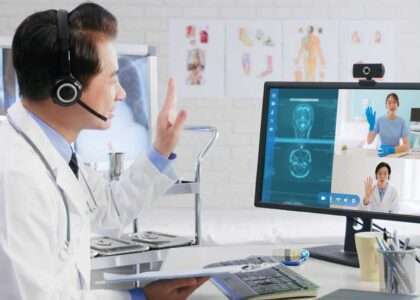As the healthcare landscape evolves, telehealth and remote patient monitoring (RPM) have emerged as key trends shaping the future of patient care. The COVID-19 pandemic accelerated the adoption of these technologies, making them integral to healthcare delivery. This blog explores the growth, benefits, challenges, and future potential of telehealth and RPM in transforming patient care.
The Growth of Telehealth and RPM
Telehealth and RPM have seen exponential growth in recent years. The convenience and accessibility of virtual care have made it a preferred option for many patients and providers. Telehealth includes a wide range of services, from video consultations to remote diagnosis, while RPM involves using devices to monitor patients’ health conditions from their homes.
Benefits of Telehealth and RPM
1. Increased Accessibility: Telehealth removes geographical barriers, providing access to healthcare for patients in remote or underserved areas. It allows patients to consult specialists without traveling long distances.
2. Cost-Effective Care: Virtual visits can reduce healthcare costs by minimizing the need for physical visits, hospital admissions, and emergency room visits. This efficiency benefits both providers and patients.
3. Enhanced Patient Engagement: RPM devices enable continuous monitoring of chronic conditions, providing real-time data to healthcare providers. This data can lead to proactive interventions, improving patient outcomes and engagement.
4. Convenience and Flexibility: Patients can schedule virtual appointments at their convenience, reducing waiting times and time off work. This flexibility is particularly beneficial for patients with mobility issues.
5. Improved Care Coordination: Telehealth facilitates better coordination among healthcare teams, ensuring timely updates and communication about a patient’s condition.
Challenges and Considerations
While telehealth and RPM offer numerous advantages, they also come with challenges. Key considerations include:
1. Data Security and Privacy: Protecting patient data is paramount in virtual care. Ensuring secure platforms and compliance with regulations like HIPAA is crucial.
2. Technology Access and Literacy: Not all patients have access to the necessary technology or the digital literacy to use telehealth services effectively.
3. Reimbursement and Regulation: The regulatory landscape for telehealth is still evolving. Providers need to navigate varying state laws and insurance reimbursement policies.
4. Quality of Care: Maintaining high-quality care through virtual means requires adequate training and protocols. There is also a need to ensure that telehealth services are integrated into the broader healthcare system.
The Future of Telehealth and RPM
The future of telehealth and RPM looks promising, with continued advancements in technology and increasing patient acceptance. Artificial intelligence, machine learning, and wearable technology will further enhance the capabilities of remote monitoring and virtual consultations.
As healthcare systems adapt to these changes, we can expect a more patient-centered approach, focusing on personalized care and preventive health. Telehealth and RPM are not just temporary solutions but are becoming permanent fixtures in healthcare delivery.
Conclusion
Telehealth and remote patient monitoring are revolutionizing healthcare by making it more accessible, efficient, and patient-centered. While challenges exist, the potential benefits far outweigh the obstacles. As we look to the future, embracing these technologies will be crucial in providing quality care to all patients, regardless of location.





